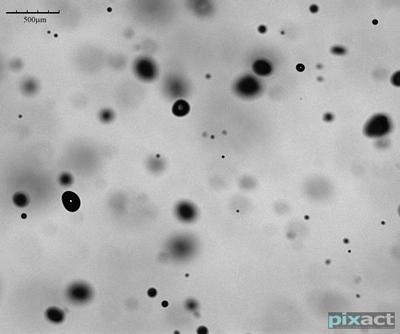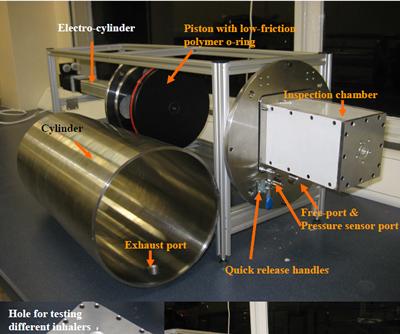The multiphase flow laboratory houses a comprehensive set of diagnostic tools for the study of sprays, particulate matter, and a wide range of other multiphase flows found in energy technology and biological systems. The dedicated multiphase test rigs and measurement facilities are summarised below, however these facilities may be used in conjunction with the University's other major flow facilities (wind and water tunnels) and laser-based measurement systems.
Particle image and particle tracking velocimetry (PIV and PTV)
These systems provide three dimensional information about the flow field of the continuous carrier phase and the dispersed particulate phase.
Particle sizing using CCD cameras.
Using image processing software developed in the laboratory the system sizes particles which are in or out of focus, such as those in the following image.

Dual beam system for measurement of transient spray velocities and relative concentration.
Two laser beams form two control volumes across which the spray plume passes. The light intensity change of the two laser beams due to beam obscuration by the spray is detected by two photodiodes and recorded by a pc based data acquisition card (AD). When the spray passes through the first laser beam there will be a drop in voltage waveform from the correlative photodiode and similarly this will occur when it traverses the second beam. The distance between the two laser beams is known (3mm in this work), and the time delay can be measured by the delayed signal acquired as a result of the spray taking a finite time to traverse the two beams, therefore the spray velocity could be calculated and also measures of relative spray concentration. It is a quick and easy diagnostic tool.

Electronic lung rig
The electronic lung rig mimics the lung function of various patient groups (healthy adults, children, smokers). The rig is fully automated in order to run through thousands of inhalations while permitting optical characterisation of particulate flows within the artificial lung.
Electrostatic atomization rigs
Designed to develop injectors which achieve excellent atomization even with low injection pressure, the electrostatic atomization rigs include high voltage systems and low current measurement of steady and pulsed operation.

Particle flow rigs
A variety of particle flow rigs have been developed to assess the properties and flows of powders.